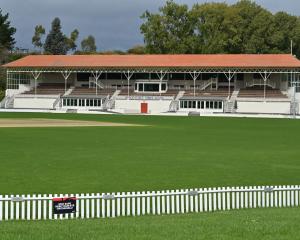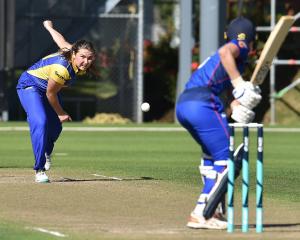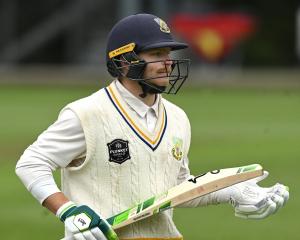Now the rants regarding New Zealand's atrocious first test performance in Sri Lanka have eased, it is time to look at a constructive method to solve the team's current problems like playing spin, playing spin and playing spin.
There must be a cricketing solution for New Zealand beyond the horrendous shot selection, the inability to recognise the release point for Rangana Herath's variations (despite the modern-day benefits of video analysis) and the psychological pounding from a side they dominated a generation ago.
Surely one answer lies in encouraging young New Zealanders to go to India and Sri Lanka on cricketing working holidays. Perhaps the country's top youth talent could forgo the time-honoured OE tradition of the English league and pints of best bitter at 18, 19 or 20 to head to the subcontinent for a cocktail of maidans and masala. New Zealand Cricket could even establish the odd link through former national players and coaches David Trist and John Wright who forged solid contacts, especially in India.
The NZC might open their coffers and invest in scholarships, particularly for top order batsmen and spin bowlers, so they can immerse themselves in the culture. Such OEs would introduce players to the wiles of spin at an earlier age, hopefully with the long-term benefit of representing New Zealand in a less possum-in-the-headlights fashion.
Sincere efforts were made in this regard but they tended to be token. Former New Zealand Academy boss Dayle Hadlee chaperoned Tim Southee and Hamish Bennett to the Dennis Lillee-run Madras' MRF Pace Foundation school for a fortnight in 2007 along with national development teams being sent to the subcontinent to hone their skills. However, those environments tended to be cloistered; participants didn't have to think much for themselves. Is it too much to ask for adventurous cricketers to eke out a unique experience with a local club for a couple of months?
They could perhaps forego plush, sterile hotels for the cheaper, 'character-building' surrounds of a high quality youth hostel. The transport would be tuk-tuks, not air-conditioned buses.
Donning a cap in humid mid 30-degree temperatures and practising your craft on the low and slow dustbowls of an expansive maidan on a Saturday afternoon, just like Sachin Tendulkar did 25 years ago in Mumbai must surely hold allure. Alternatively, players could make their name among the plethora of clubs in the Colombo suburb of Cinnamon Gardens. New Zealand might see a return to innings like Stephen Fleming's 274 not out in a test at Colombo almost a decade ago.
A sustained spell in a club competition might be too much to ask. Another option could be schooling players at one of numerous reputable local academies, particularly in India. The Herald on Sunday understands it would not be hard to strike up a relationship with a local association or to entice former first-class bowlers and other top quality tweakers to bowl at players in sustained net sessions over a fortnight for minimum financial reward. It would be an extension to what New Zealand has done in the past, bringing in the likes of former test players Saqlain Mushtaq and Chaminda Vaas for guidance.
The question of more experienced New Zealand players immersed in sub-continental provincial competitions is more difficult. As an example, India, unlike New Zealand, tends to keep a tight rein on allowing internationals players into the Ranji Trophy because it is seen as a sacrosanct nursery where they learn to play test cricket. Even Chris Cairns was apparently turned down in his pomp.
- By Andrew Alderson












